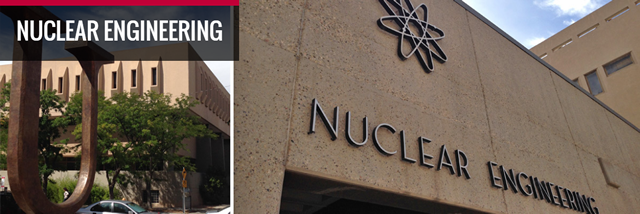
Nuclear Engineering ETDs
Publication Date
1-28-2015
Abstract
The objective of this work was to characterize the neutron irradiation system consisting of americium 241 beryllium (241AmBe) neutron sources placed in a polyethylene shielding for use at Sandia National Laboratories (SNL) Low Dose Rate Irradiation Facility (LDRIF). With a total activity of 0.3 TBq (9 Ci), the source consisted of three recycled 241AmBe sources of different activities that had been combined into a single source. The source in its polyethylene shielding will be used in neutron irradiation testing of components. The characterization of the source-shielding system was necessary to evaluate the radiation environment for future experiments. Characterization of the source was also necessary because the documentation for the three component sources and their relative alignment within the Special Form Capsule (SFC) was inadequate. The system consisting of the source and shielding was modeled using Monte Carlo N-Particle transport code (MCNP). The model was validated by benchmarking it against measurements using multiple techniques. To characterize the radiation fields over the full spatial geometry of the irradiation system, it was necessary to use a number of instruments of varying sensitivities. First, the computed photon radiography assisted in determining orientation of the component sources. With the capsule properly oriented inside the shielding, the neutron spectra were measured using a variety of techniques. A N-probe Microspec and a neutron Bubble Dosimeter Spectrometer (BDS) set were used to characterize the neutron spectra/field in several locations. In the third technique, neutron foil activation was used to ascertain the neutron spectra. A high purity germanium (HPGe) detector was used to characterize the photon spectrum. The experimentally measured spectra and the MCNP results compared well. Once the MCNP model was validated to an adequate level of confidence, parametric analyses was performed on the model to optimize for potential experimental configurations and neutron spectra for component irradiation. The final product of this work is a MCNP model validated by measurements, an overall understanding of neutron irradiation system including photon/neutron transport and effective dose rates throughout the system, and possible experimental configurations for future irradiation of components.
Keywords
Computed photon radiography, High Purity Germanium Detector, N-probe Microspec, Bubble Dosimeter Spectrometer, MCNP, Neutron foil activation
Sponsors
Sandia National Laboratories
Document Type
Thesis
Language
English
Degree Name
Nuclear Engineering
Level of Degree
Masters
Department Name
Nuclear Engineering
First Committee Member (Chair)
Cooper, Gary
Second Committee Member
Wasiolek, Maryla
Third Committee Member
Busch, Robert
Recommended Citation
Franco, Jr. Manuel. "Characterization of the Neutron Irradiation System for use in the Low-Dose-Rate Irradiation Facility at Sandia National Laboratories." (2015). https://digitalrepository.unm.edu/ne_etds/39
